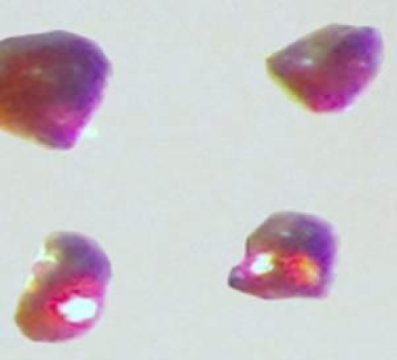The scientists from the U.S. Department of Energy’s Ames Laboratory are being advantaged with preparing and introducing the very first intermetallic double salt with platinum. The materials scientists Anja Verena and Volodymyr Smetana were the first researchers to prepare and precisely characterize the compound.
CesiumPlatinide Hydride creates a translucent ruby red crystal and can occur just in an inert environment close to conditions that occur in outer space. It is a novel member of a rare group of compounds in which a metal creates a truly negative charged ion.
“It is a compound that as per the scientists and researcher you have trouble envisioning that it can even occur, but once you have performed it and can analyse it, there would be nothing like what you may expect,” says Mudring. “Instead of preparing a shiny, gray alloy as usually observed for multiple hydrogen storage substances by reacting the metals platinum and cesium with hydrogen, such red crystals form. They are truly quite beautiful and lucrative.”

The intriguing novel compound was basically extracted from a cesium melt. The compound is exceedingly unstable, with the platinum present in the compound returning to its elemental state and structure if it is revealed to oxygen. Since primary detected it took a long time to comprehend its real nature and prove the composition.
The singular crystal studies linked with powder X-ray diffraction, magnetic resonance and solid – state nuclear and intense theoretical investigations enabled scientists to prove its occurrence and existence. Its unique and unusual structure and features, so varying from basic intermetallic hydrides, are explained by the robust influence of relativistic effects on both platinum as well as cesium.
“It is absolutely unique. It is the very first example we have a salt with so powerful negatively charged metal ions. Moreover, you can even mix that allows with an ideal composition of salt and obtain another non – conducting salt,” says Mudring. “This enables for some intense insight into the nature of chemical linkage and as Goethe wrote, eventually what exists in the world and its compounds are linked together in its innermost form.”
Conclusion
The scientists has further detailed out this study and they are carrying the study for further investigations. According to them, the cesiumplatinide hydride is an intermetallic double salt featuring anions based with metals. Volodymyr Smetana and Anja Verena also said that the study needs further research and hence they would like to carry the same research on anions based with other types of metals that are expected to deliver similar efficient results.
Filed Under: News


Questions related to this article?
👉Ask and discuss on Electro-Tech-Online.com and EDAboard.com forums.
Tell Us What You Think!!
You must be logged in to post a comment.